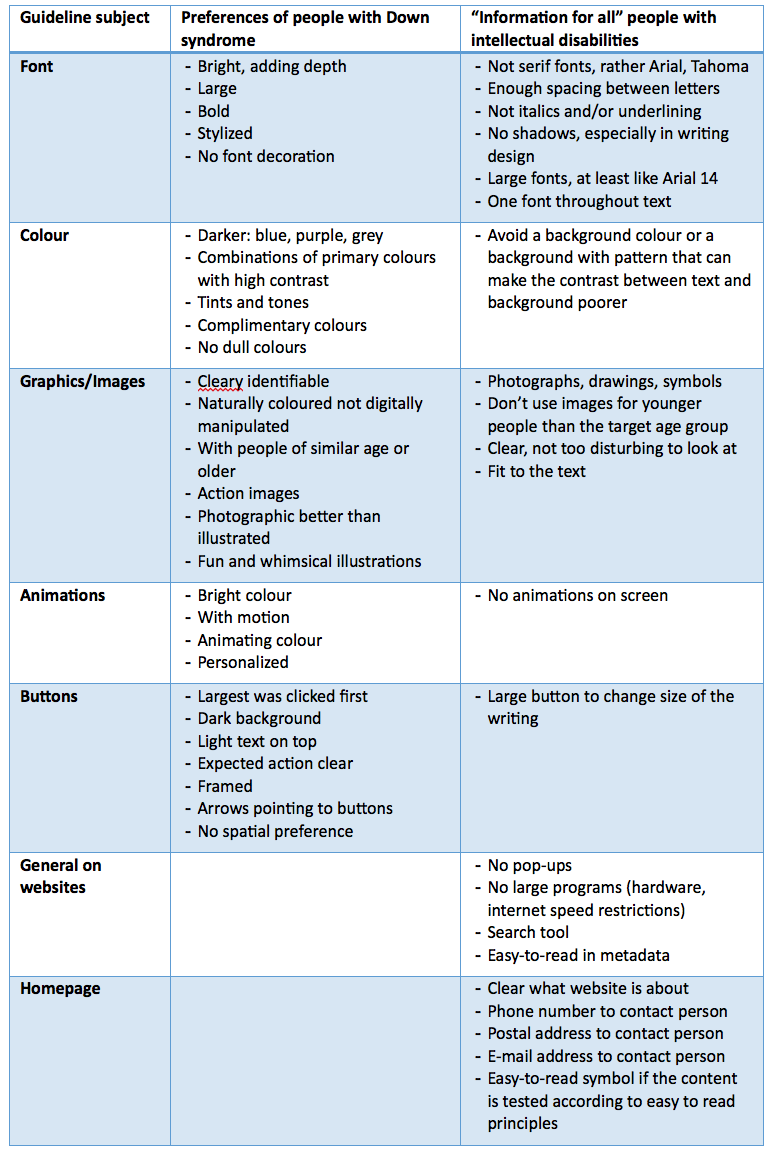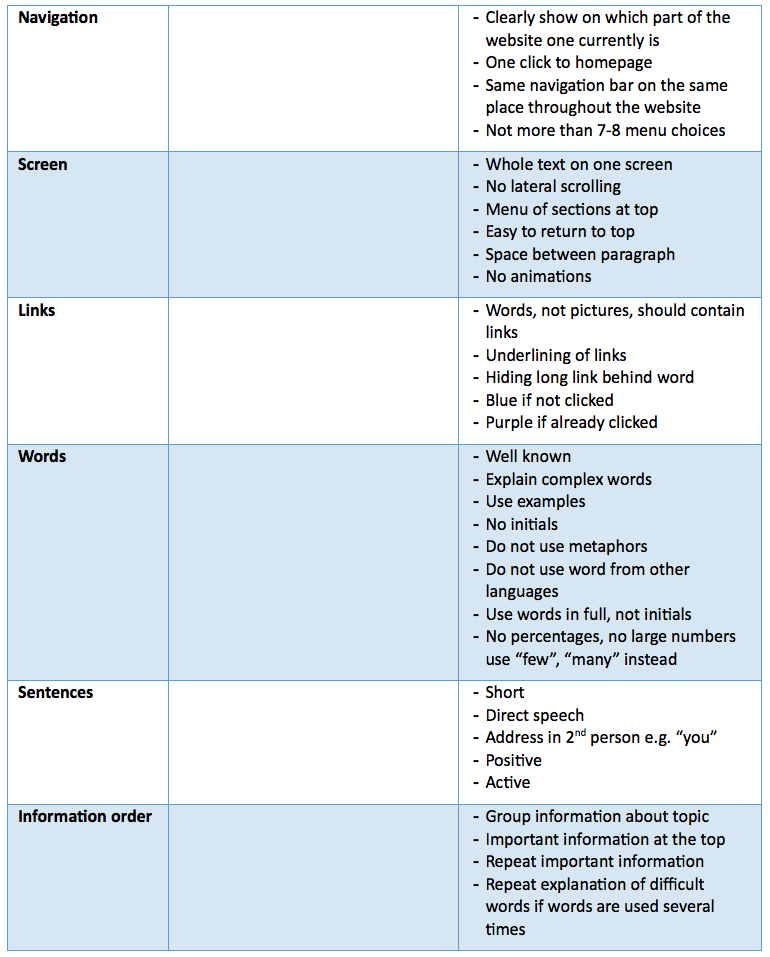Technology use of persons with DS
People with Down syndrome represent a unique target group since three major types of capabilities (first cognitive, but also to some extent motor and perceptual) are affected. The capabilities and disabilities often vary to a high extent from person to person with Down syndrome. Furthermore, each person with Down syndrome shows individual characteristics related to heredity, training and the social environment around him/her. Thus, only some generalisations are possible for persons with Down syndrome. The high individuality represents a major challenge for a technical development and underlines the importance of a user-centred design approach with many possibilities for individualisations. Despite the wide range of competencies and impairments, common problems for people with Down syndrome are:
- Limitations in vision and hearing, disturbed sensory skills, including hyposensitivity when touching something, problems with fine motor movements
- Weak muscles in arms and fingers
- Limitations in short term memory and cognition, including problems with verbal auditory memory, hence it is harder to recall information that is heard than what is read or seen
- Limitations in communication skills. Delayed development of receptive and expressive language. They often understand much more than they can express (receptive language is superior to expressive language). They have a relative strength in vocabulary and pragmatics and more difficulties with morphology and syntax. They also in general have reduced speech intelligibility. This lead to problems with complex conversational skills. (Overview: Feng 2010, Lazar 2011, Bull 2011).
It is important to recognise both the strengths and difficulties a person with Down syndrome has. As McGuire and Chicoine (2006) note, most children with Down syndrome enjoy and learn from social interaction with family and friends. As time goes by, they often have good social and emotional understanding, and most are able to develop age-appropriate behaviour, if this is encouraged and expected. People with Down syndrome generally learn visually; this is probably why reading can sometimes be a strength. This means that they learn best from watching and copying other people, and may find it easier to take in information if it is presented with the support of pictures, gestures, objects and written words. Using their hands, faces and bodies to communicate is another strength, and many people with Down syndrome enjoy drama and movement because of this strength. The approach taken within POSEIDON should always build on the strengths of people with Down syndrome while keeping the possible limitations in mind.
People with Down Syndrome as computer users
The possible limitations and characteristics of people with Down syndrome have a major impact on the usage of technology and underline the need for usability-focused and user centred design. The goal is not only to develop technology that is easy to use in general, the technology must also be useful to the user in spite of his/her possible limitations. The limitations in cognitive, language and motor skills all have a profound impact on computer usage for persons with Down syndrome. They have e.g. difficulties in remembering, processing information, understanding abstract concepts, reading, writing, communicating, navigating, typing and using the mouse. These limitations present major challenges both for users, designers and technicians. Nonetheless the diversity of capabilities is a problem, but many persons with Down syndrome can use PC, tablets and smart phones surprisingly well.
In POSEIDON we have looked at studies and extracted guidelines from the findings. The findings suggest that computers and computer devices are of great importance for people with Down syndrome because they can help to increase confidence and motivation through creative activities and web browsing. Using the computer has other benefits as well, including errorless learning, patient and immediate feedback, self-paced learning and independence of learning. It should be stated also that all those benefits and useful features are dependent on developing a technology which meets the heterogeneous demands of the target group.
The following table combines a study on preferences of people with Down syndrome with the more general “Information for all” standard. The first is an in-depth study of a small number of people with Down syndrome. The second is a standard for people with intellectual disabilities in general, and focuses on making information easy to read and to understand on different media. Both share the idea of using as simple wording as possible, and both strongly suggest the use of photographs and images to support the idea presented with words. The recommendations for the use of animations differ, but this is based on different usage of the animations. For example, if animations are always placed on the screen it can be distracting. On the other hand, some personalized animations used as reward system can be motivating. Furthermore, a general rule is to avoid everything unexpected, like e.g. pop-up windows.

